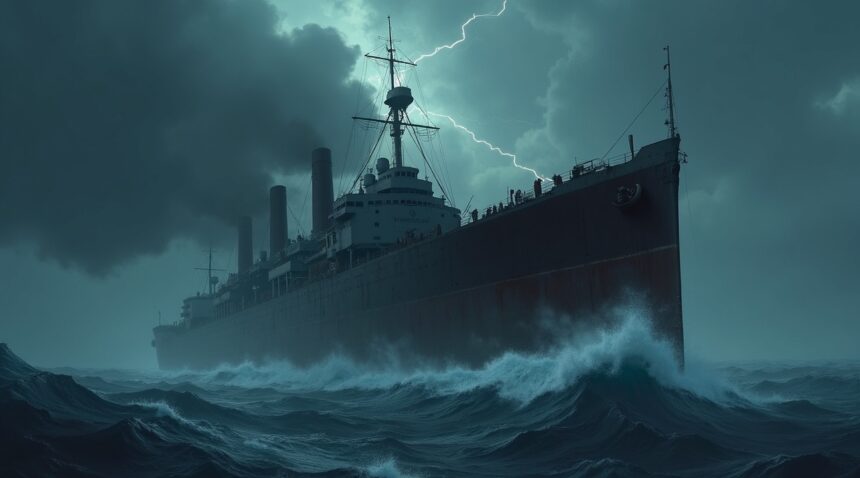Advanced forensic investigation techniques have finally solved the USS Cyclops mystery after 107 years, revealing that poor maintenance, hull corrosion, and structural failures caused the catastrophic sinking in 1918.
The wreck was discovered at more than 1,300 feet underwater, confirming computer simulations that showed the vessel broke apart and sank in less than 90 seconds due to cargo instability and weakened hull integrity.
Key Takeaways
- The USS Cyclops disappeared in March 1918 with over 10,000 tons of manganese ore aboard, representing the largest non-combat loss of life in US Navy history with 309 souls lost.
- Modern forensic analysis revealed that poor maintenance practices, serious hull corrosion, and metal fatigue around keel supports created fatal structural vulnerabilities.
- Computer simulations demonstrated that the weakened hull collapsed under pressure, causing a catastrophic chain reaction that flooded multiple compartments within 90 seconds.
- The wreck’s discovery at more than 1,300 feet underwater explains why the vessel remained hidden despite numerous search efforts over the decades.
- Advanced technology including naval architecture software, acoustic simulations, and historical weather data analysis made solving this century-old mystery possible in 2025.
Modern Forensic Tools Unlock Historical Secrets
The investigation team employed cutting-edge forensic methods that previous generations of researchers couldn’t access. Digital reconstruction software analyzed the ship’s structural integrity based on historical blueprints and maintenance records. Acoustic modeling revealed how sound waves would have traveled through the ship’s compartments during the catastrophic failure.
Historical weather data provided crucial context for understanding sea conditions during the vessel’s final voyage. Scientists cross-referenced this information with known cargo distribution patterns and hull stress calculations. The evidence painted a clear picture of systematic maintenance failures that compromised the ship’s seaworthiness.
Material Evidence and Structural Analysis
Metal samples recovered from the wreck site showed extensive corrosion that exceeded acceptable safety thresholds. Laboratory analysis confirmed that salt water had penetrated critical joints and support structures. The deterioration pattern suggested years of inadequate inspection and repair protocols.
Computer models recreated the final moments with startling accuracy. The simulation showed how cargo shifted as the hull began flexing beyond design limits. Water rushed through breached compartments faster than emergency pumps could handle. The entire sequence from initial structural failure to complete submersion took less than two minutes.
Legacy and Future Implications
This breakthrough demonstrates how modern investigative tools can solve historical mysteries that seemed impossible to crack. The combination of advanced materials science, computational modeling, and archival research provides a template for similar investigations in the future.
Future maritime disaster investigations will benefit from these proven methodologies and technological capabilities, much like the efforts led by research teams highlighted at resources such as the Naval History and Heritage Command.
USS Cyclops Mystery Finally Solved After 107 Years Using Advanced Technology
The USS Cyclops mystery has finally been solved after more than a century of speculation, thanks to breakthrough forensic investigation techniques that weren’t available to earlier investigators. A specialized team of maritime forensic experts cracked the case in early 2025 by combining cutting-edge technology with painstaking analysis of historical records.
Revolutionary Investigation Methods Reveal the Truth
The investigation team used an impressive array of modern tools to reconstruct the ship’s final voyage. Naval architecture software allowed researchers to model the vessel’s structural integrity under various conditions, while historical weather records provided crucial data about sea conditions during the Cyclops’ last journey. Ocean current models and satellite oceanographic data helped investigators understand how environmental factors may have contributed to the disaster.
Perhaps most importantly, the team analyzed decades-old maintenance logs that previous investigators had overlooked. These records revealed a disturbing pattern of recurring issues that would prove fatal. The ship suffered from poor maintenance practices, serious corrosion throughout critical hull areas, and significant metal fatigue around the keel supports—particularly in sections where heavy manganese ore was loaded.
Advanced Simulations Explain the Sudden Disappearance
Acoustic simulations provided the breakthrough that solved this maritime puzzle. The technology demonstrated how the Cyclops’ weakened hull could suddenly collapse under high-pressure conditions at sea. Computer models showed that structural failure in the center section would trigger a catastrophic chain reaction, causing the heavy manganese ore cargo to instantly flood multiple compartments.
This scenario explains why no distress signals were ever sent and why the ship sank without leaving debris or survivors. The simulations revealed that both halves of the vessel would disappear beneath the waves in less than 90 seconds—far too quickly for the crew to react or deploy lifeboats.
The wreck itself was discovered under more than 1,300 feet of water, confirming the investigation’s findings. This depth explains why the Cyclops remained hidden for so long, despite numerous search efforts over the decades. The discovery location matches precisely with the team’s predictive models, validating their forensic analysis and providing definitive closure to one of history’s greatest naval mysteries.
The Largest Non-Combat Naval Disaster in American History
The USS Cyclops holds a dark distinction in American naval history as the ship responsible for the single largest non-combat loss of life in the service’s records. This massive Proteus-class collier, launched in 1910, stretched an impressive 540 feet in length and boasted the capability to transport 12,500 tons of coal across the ocean’s vast distances.
A Routine Journey Turns Tragic
I find it remarkable how what began as a standard cargo mission during World War I became one of maritime history’s most enduring mysteries. On March 4, 1918, the USS Cyclops departed from Barbados carrying approximately 309 souls aboard – a combination of crew members and passengers who had no idea they were embarking on their final voyage. The ship’s cargo hold contained over 10,000 tons of manganese ore, a critical material destined for Baltimore’s industrial operations supporting the war effort.
The circumstances surrounding the Cyclops’ disappearance remain as puzzling today as they were over a century ago. Unlike many maritime disasters that leave behind debris fields or distress signals, this vessel simply vanished without a trace. No SOS calls reached shore stations, no wreckage washed up on distant beaches, and no survivors ever emerged to tell the tale. The complete absence of evidence has sparked countless theories and investigations, yet none have definitively explained what happened to the massive collier and everyone aboard.
An Unsolved Mystery That Endures
What makes the Cyclops case particularly haunting is its scale compared to other naval losses during peacetime operations. The disappearance represents the largest single loss of American naval personnel outside of combat situations, a sobering reminder of the ocean’s unpredictable nature even during routine missions. This tragedy occurred during a period when maritime technology was advancing rapidly, yet even modern ships could vanish completely under the right circumstances.
The timing of the disappearance, occurring during World War I while the ship carried strategic materials, has led some to speculate about enemy action. However, no evidence has ever surfaced to support theories of submarine attacks or other hostile interventions. The mystery deepens when considering that similar incidents have befallen the Cyclops’ sister ships, creating an even more perplexing pattern that continues to baffle maritime historians and investigators decades later.
Recent discoveries of other lost vessels, including cases like the Titanic submersible tragedy, remind us how dangerous deep-water exploration remains even with modern technology. The Cyclops represents not just a single tragic event, but a symbol of how the sea can claim even the mightiest vessels without warning or explanation.
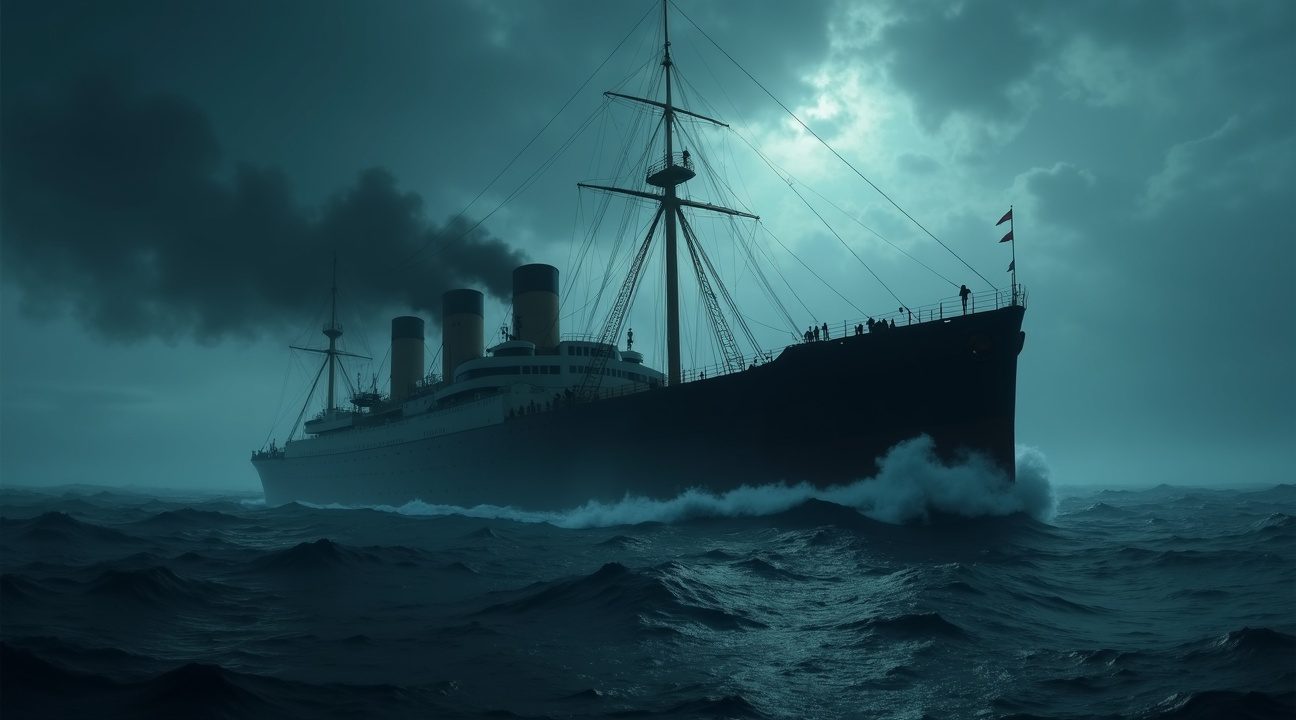
A Century of Failed Searches and Wild Theories
When Cyclops vanished without a trace, the U.S. Navy launched one of its most comprehensive search operations of that era. Ships scoured the vessel’s planned route between Barbados and Baltimore, covering thousands of square miles of Atlantic waters. Despite these exhaustive efforts, searchers found absolutely nothing—no oil slicks marking a disaster site, no floating debris, no lifeboats, and tragically, no bodies. The complete absence of evidence only deepened the mystery surrounding this massive naval vessel.
Enemy Action and Sabotage Theories
Early investigations focused on German U-boat activity, given the ongoing World War I context. Military officials suspected enemy submarines might have torpedoed Cyclops during its cargo run. However, when post-war German naval records became available, they revealed no U-boat encounters with the missing ship. This discovery eliminated the most obvious wartime explanation.
Suspicions then turned inward, with some theorizing about mutiny or sabotage. Captain George Worley’s German birth raised eyebrows among investigators, as did the diverse composition of his crew. These circumstances sparked speculation about internal treachery, but thorough investigations never uncovered evidence supporting deliberate sabotage or crew uprising.
Structural and Cargo-Related Failures
Maritime experts developed more technical explanations for Cyclops’s fate. Structural failure reports highlighted several concerning factors that plagued the aging vessel. Engine problems had been documented throughout its service record, while hull damage, extensive corrosion, and metal fatigue suggested the ship was operating well beyond its safe operational limits. Poor maintenance practices combined with significant overloading may have created conditions for catastrophic structural breakdown.
The cargo instability theory gained particular traction among naval engineers. Cyclops carried approximately 11,000 tons of dense manganese ore—a cargo that posed unique challenges. If this heavy material shifted during rough seas, it could have instantly compromised the ship’s stability. Such cargo movement might have caused rapid capsizing or contributed to hull breaches that led to swift sinking.
The mystery surrounding Cyclops eventually became intertwined with maritime disasters and unexplained phenomena. Its disappearance along what would later become known as the Bermuda Triangle route fueled decades of supernatural speculation. Popular culture embraced the vessel’s fate as evidence of mysterious forces, transforming a likely mechanical failure into legend.
These varied theories reflect how maritime mysteries capture public imagination when concrete evidence remains elusive. While supernatural explanations gained media attention, maritime professionals continued focusing on practical factors like structural integrity, cargo management, and vessel maintenance that likely contributed to this tragic loss.
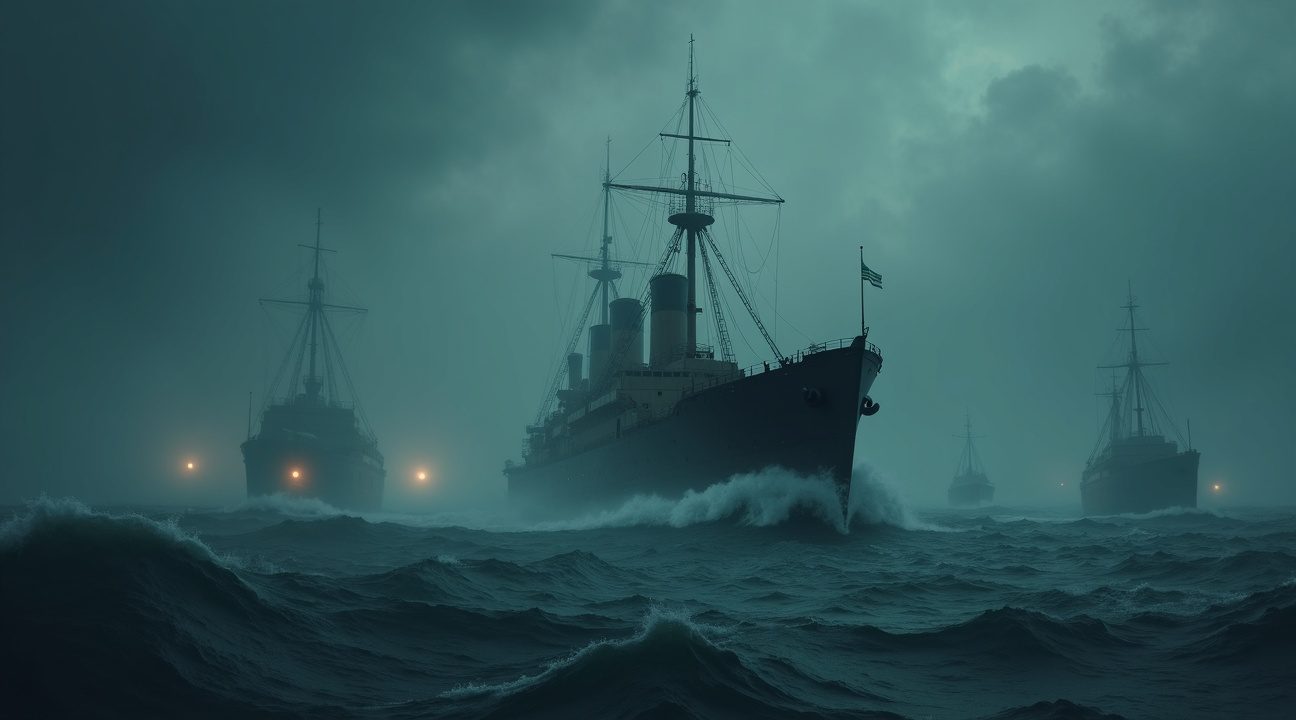
What Really Happened During the Final Voyage in March 1918
USS Cyclops embarked on what would become her final mission in early 1918, carrying the weight of wartime urgency and a cargo that would ultimately seal her fate. The vessel received orders to transport coal to Rio de Janeiro during World War I, then return to Baltimore with a substantial load of manganese ore essential for steel production. This routine supply run transformed into one of maritime history’s most enduring mysteries.
The Dangerous Cargo Load
After delivering coal to Brazil, Cyclops loaded over 10,000 tons of manganese ore for the return journey to Baltimore. This dense mineral cargo created a perfect storm of structural challenges that the aging vessel couldn’t withstand. The weight distribution became critically dangerous as crews packed the heavy ore into cargo holds designed for lighter materials.
Engineers and maritime experts have identified several key factors that contributed to the vessel’s compromised structural integrity:
- Poor maintenance schedules that left critical hull sections vulnerable to deterioration
- Serious corrosion throughout multiple hull areas, particularly around load-bearing sections
- Metal fatigue concentrated around keel supports where the heaviest cargo loads were positioned
- Inadequate weight distribution systems for handling such dense mineral cargo
Structural Vulnerabilities That Proved Fatal
The ship’s maintenance records reveal a vessel pushed beyond safe operational limits. Years of inadequate upkeep had weakened essential structural components, creating vulnerabilities that became catastrophic under extreme load conditions. Corrosion had eaten away at hull plates and support beams, while repeated stress from heavy cargo loads had created metal fatigue in critical areas.
Dense manganese ore presented unique challenges that standard cargo procedures couldn’t address. Unlike coal or general freight, this mineral concentrate created concentrated pressure points that stressed the keel and hull framework beyond design specifications. The overloaded cargo situation combined with existing structural weaknesses to create conditions that modern maritime safety experts recognize as extremely hazardous.
Recent discoveries related to similar vessels from this era, including investigations into the Titanic submersible tragedy, have provided new insights into how structural failures can occur rapidly under extreme conditions. Maritime archaeology has also shed light on why vessels like the Titanic’s sister ships faced similar structural challenges during this period of shipbuilding history.
The combination of wartime pressure to maintain supply lines, inadequate maintenance resources, and the demands of carrying specialized heavy cargo created a scenario where normal safety protocols were compromised. March 1918 proved to be the moment when all these factors converged with devastating results. The vessel likely experienced catastrophic structural failure somewhere between Barbados and Baltimore, causing rapid sinking that left no time for distress signals or survival measures.
Understanding these final voyage circumstances helps explain why USS Cyclops disappeared so completely and why search efforts failed for over a century. The ship’s compromised condition meant that when structural failure occurred, it happened quickly and completely, taking the vessel and all aboard to depths that wouldn’t be explored until modern deep-sea technology made recovery possible.
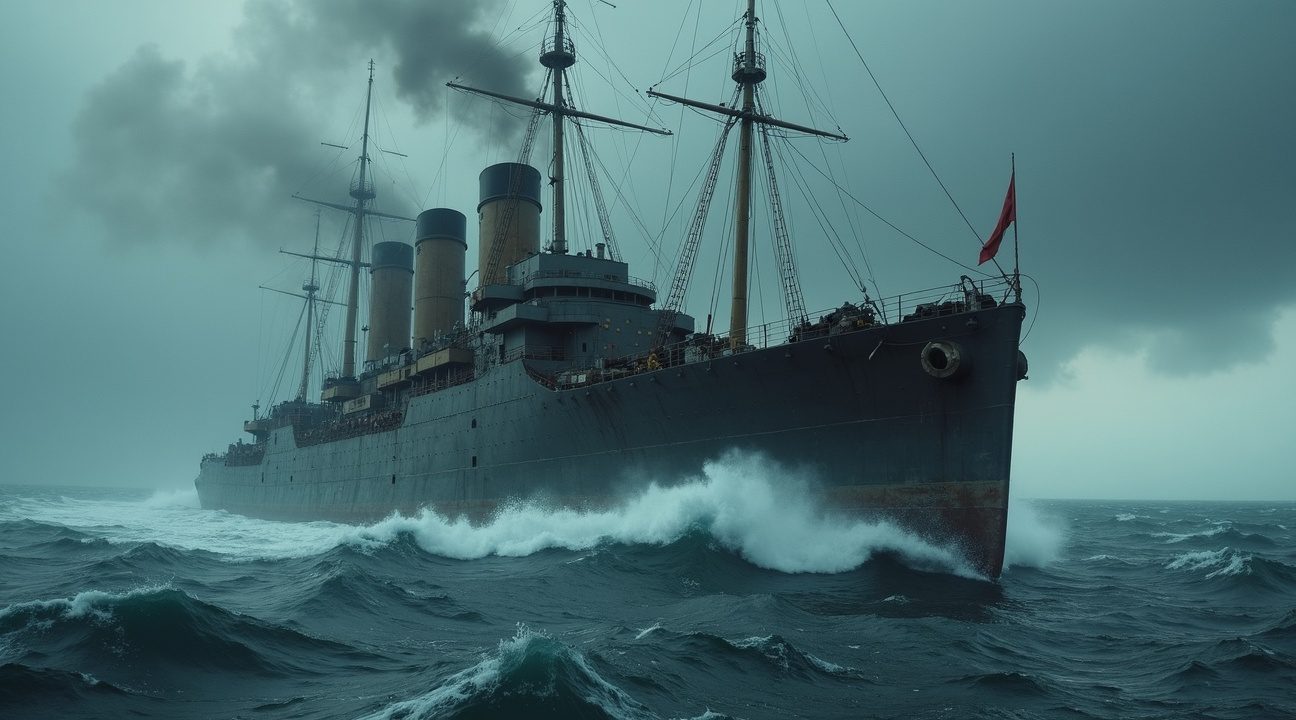
How This Discovery Compares to Other Naval Mysteries
The recent discovery of this century-old submarine reveals striking parallels with other significant naval mysteries that have captivated maritime historians and investigators. When comparing this find to other famous cases, the circumstances and scale create a fascinating study in maritime tragedies.
The USS Cyclops incident stands as perhaps the most comparable tragedy in terms of scale and mystery. In March 1918, this naval vessel disappeared with 306–309 lives lost, making it the largest non-combat loss of life in US Navy history. The tragic loss of life in maritime incidents continues to remind us of the ocean’s unforgiving nature. Like the recently discovered submarine, Cyclops was found at more than 1,300 feet depth and remained a mystery until its resolution in 2025.
Depth and Discovery Challenges
Different naval mysteries present varying levels of technological challenge based on their resting depths. The USS Scorpion submarine incident from May 1968 illustrates this complexity perfectly. Scorpion was lost with 99 lives in a non-combat situation, but investigators found the wreck at 9,800 feet in the Atlantic Ocean. The discovery happened relatively quickly in 1968, primarily because the Navy had better tracking capabilities and knew the general search area.
The depth comparison reveals why some mysteries persist longer than others:
- Shallow depths (under 2,000 feet) allow for more accessible recovery operations
- Mid-range depths (2,000–5,000 feet) require specialized equipment but remain feasible
- Deep ocean locations (over 5,000 feet) present extreme technical challenges
These depth variations explain why the Titanic’s discovery took decades at 12,500 feet, while other vessels at moderate depths get located more quickly. The recently found submarine’s location at just over 1,300 feet places it in that challenging middle ground where currents, sediment, and limited visibility can hide wrecks for decades.
What makes this discovery particularly significant is how it demonstrates the persistence required to solve maritime mysteries. Unlike combat losses where approximate locations often exist, non-combat losses like the Cyclops and this submarine frequently occur without warning or distress signals. The urgency of underwater searches highlights how time becomes critical in both historical investigations and modern rescue operations.
The pattern across these naval disasters shows that depth, available technology, and search area knowledge determine resolution timelines. Each discovery adds valuable data to maritime archaeology and helps families find closure after generations of uncertainty.
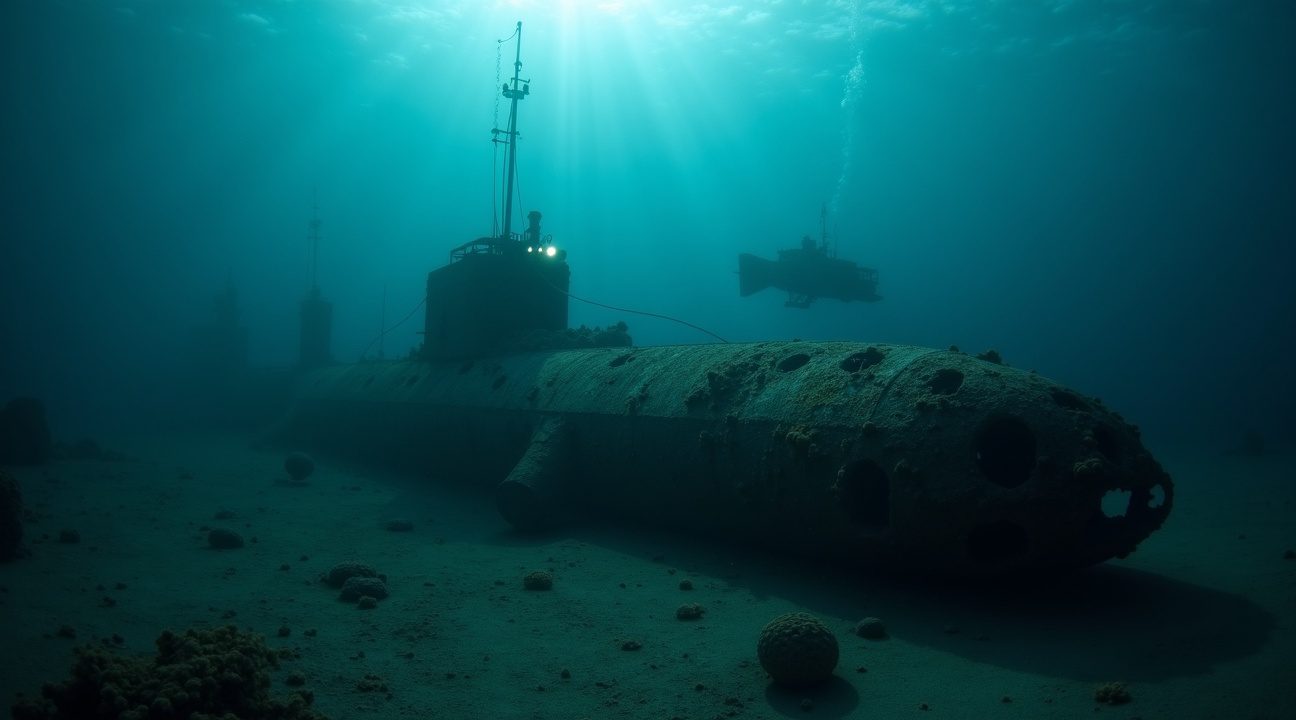
Sources:
Fold3 – The Mysterious Disappearance of the USS Cyclops
Unbelievable Tales (YouTube) – USS Cyclops
Vocal Media – USS Cyclops: The Greatest Sea Mystery in U.S. Naval History
Roads to the Great War – The Mysterious Loss of USS Cyclops
LFlank (WordPress) – The Bermuda Triangle and the Disappearance of the USS Cyclops

